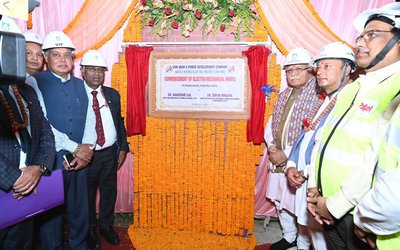Sushmita is taking this year's School Leaving Certificate (SLC) exams, which are underway now. She intends to focus on her studies. "But when I sit down to study in the evenings, the lights go out. That is so disturbing," she complains. Although her family owns a battery operated inverter, it cannot sustain lights through the long hours of power cuts.
Nepal Electricity Authority frequently increases the power outages, which have taken a big toll on the public. For a country, which has a potential of generating almost 83,000 MW of hydropower, living the many hours without lights throws bare an irony of its own kind. Nepal should have had huge hydropower plants. Unfortunately, only less than 1% of the nation's power generation potential has been harnessed.
Among the many reasons for the failure of the hydropower sector in Nepal, weak policies offer a glaring example. The country's policies have failed to attract enough Foreign Direct Investment (FDI) in the hydropower sector. Despite so much of talk about FDI, no substantial foreign investment has come to the power projects except for Khimti, Bhotekoshi and Himal Power.
The discussions on the FDI mostly focus on hydro power generation and not on the transmission and distribution processes.A free market mechanism that attracts foreign investment not only in generation but also transmission and distribution of electricity alone will be a viable option to solve the power crisis in the country.
This is necessary primarily because of two reasons. First, it will create efficiency in the overall hydropower industry, which is now plagued with monopoly of the Nepal Electricity Authority (NEA). Second, it is not possible for Nepal’s public and private sectors to solely handle electricity generation, transmission and distribution, which is based on capital intensive technology. The inadequacy of resources in private and public sectors to meet the financial needs of hydro power extraction makes foreign investment in this sector all the more necessary.
Take for instance the case of Bhutan. Foreign investment in Bhutan's hydropower sector has proven to be a catalyst in economic development thanks to its unique model based on electricity selling and not only river sharing with its foreign investors.
But talks alone won’t be enough. There is a need for revision of policies regarding FDI, especially in the hydropower industry. The Foreign Investment and Technology Transfer Act 1992 and Industrial Enterprises Act 1992 have not been updated since long. Government of Nepal’s investment board, whose main objective is to attract foreign direct investment (FDI), needs to stress on the fact that foreign investment is necessary not only in the generation of energy but also in its transmission and distribution.
Finance Secretary Shanta Raj Subedi, speaking at the Nepal Economic Summit 2014 held last month, said that investment in hydropower is secure and profitable due to the market for domestic consumption and export. If the government believes so, it is necessary that it should make necessary policy changes on an immediate basis.
The government must now be aware of the bright sides of breaking monopoly over strategic resources like hydropower and adopting a free market mechanism. Former Finance Minister Ram Sharan Mahat, speaking at an event earlier this year, said that Nepal needs an annual investment of Rs 600 billion to achieve 7-8 percent economic growth. This will not be possible without FDI. Fuel scarcity combined with the unavailability of electricity has already shattered industrial development. Institutional arrangements in the hydropower sector are now needed more than ever. With proper policies, governance and better coordination among government agencies and other stakeholders, Nepal’s hydropower sector can be a hot spot for FDI inflow and economic growth.

Shalinta Sigdel
Sigdel is a Finance graduate from Stratford University
- Pokhara International Airport and its anticipated gains to the economy
- Apr 21, 2016
- Nepali Constitution and Economy - All’s Not Well
- Sep 26, 2015
- Economic Costs Of Kathmandu Airport Fiasco
- Mar 23, 2015
- Implications Of Fuel Price Fall
- Mar 06, 2015
- Lingering Statute Process: Economic Implications
- Jan 30, 2015















